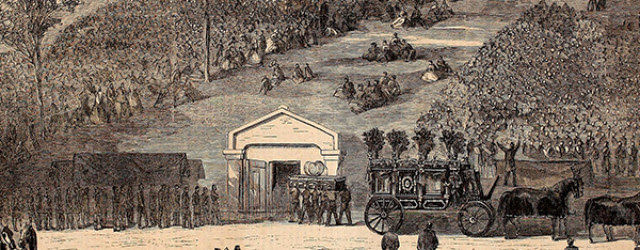A Brief Overview of Modern Embalming
- marycoupland5
- Oct 21, 2024
- 4 min read

What is Embalming really? You may or may not be surprised that we get asked this question often. This, and any other question you have regarding the death care industry is perfectly valid and we encourage it! We believe that the better understanding you have, the more peace of mind you receive when making decisions. Read the following to learn an overview of Modern Embalming…
HISTORY:
Modern embalming practices came about with a combination of anatomical discoveries and the social need to preserve the dead. The American Civil War resulted in thousands of deaths, and the Industrial Revolution meant that for the first time in history there was a way to quickly transport the deceased soldiers home to their loved ones for burial. The need then, was to find a way to preserve them until they arrived back home. Thomas Holmes, “The Father of Modern Embalming” pieced together a methodology that allowed for sanitation and preservation of these soldiers, and thus a movement in America was born.
The assassination of Abraham Lincoln was the final piece of history that cemented the importance of embalming into the American heart and mind. His embalmed body went on a tour of the northeast United States, stopping in 13 cities, and thousands of people were able to look at him, and say goodbye. The impact of that event settled into society as a normal and appropriate way to preserve loved ones, so that people had time to come to say their goodbyes.
CAUTION / NOTE:
The purpose of this article is to provide a scientific overview of the embalming process, and while the descriptions are not meant to be graphic, there will be a certain amount of detail provided that some may find overwhelming.
EMBALMING PROCESS:
The first step of any embalmer is to assess the physical condition of the deceased. Varying factors from cause of death, medications, weight, and time since death will dictate the exact formula used for the embalming fluid. The body will also be gently rinsed with water and the nose, mouth, and eyes will be disinfected. The process known as “setting the features” will come next, where the eyes are closed and the mouth is shut and formed into a natural position. Then comes the chemical process.
Today’s embalming practices utilize the circulatory system as the primary means of delivery of the embalming fluid throughout the body. This is because the embalming fluid can follow the same path that blood takes through the body, thus ensuring that all organs, tissues, and cells are exposed to the chemicals, the same way that oxygen is delivered to them and carbon dioxide is carried away from them in life.
A chemical mixture of formaldehyde, water, dyes, and other chemicals is first prepared in a machine that has tubing which will allow for it to be injected into the deceased. The right carotid artery, or one of the femoral arteries is typically preferred by the embalmer as the primary injection site. Thus a scalpel is used to make an incision near the artery, and it is isolated and cleaned before being opened. A canula (the device that connects to the embalming machine and fits into the blood vessel), is inserted and the machine is started, pushing the fluid into the body.
As the fluid enters the body it pushes the blood that was already present ahead of it through the circulatory system. This creates a need to open a vein for drainage of that blood. Generally, the vein closest to the artery being used will be opened to allow this drainage to happen.
As the injection of fluid is occuring, the embalming is moving up and down the body, massage arms and legs, fingers and feet, to ensure that the fluid is getting to all areas of the body. The dyes in the fluid may create a pinkening of skin tissue, which also allows for a visual of how the fluid is progressing. Once the injection is complete, the embalmer will move on to the next step, which is preserving the internal organs in the torso.
Even though embalming fluid has gotten to them, there is a need for stronger chemical treatment as they are dense, and some, like the intestines, are naturally filled with bacteria that can speed up the breakdown of body tissue. A hollow metal tube with a pointed end called a trocar is inserted into the abdomen near the belly button, and is gently moved around to remove any fluid that has collected. Once this is completed, a bottle of the stronger chemical is attached to the trocar and allowed to flow down into the body cavity. Once this step is completed, the body is gently washed thoroughly with soap and water. This completes the embalming process and the deceased is ready to be dressed and cosmetized.
MAKING TIME:
The embalming process has created a temporary time where natural bodily processes are halted, allowing the family and friends time to safely gather and mourn over their loved one’s body. It is our hope that a better understanding of the science behind the embalming process can help combat various myths and fears surrounding the procedure.
If you have any further questions, don’t hesitate to contact us today.
Article Submitted by:
Tim and Alison Dinan, Owners
Cook Family Funeral Home, Cremation Service, and Hillcrest Cemetery
206-842-2642
.png)



Comments